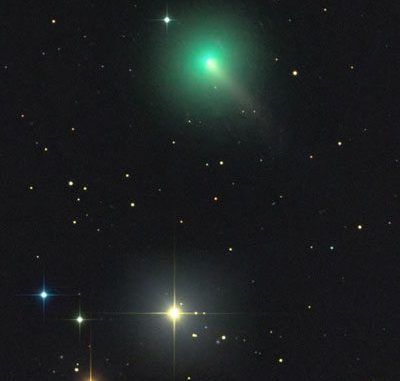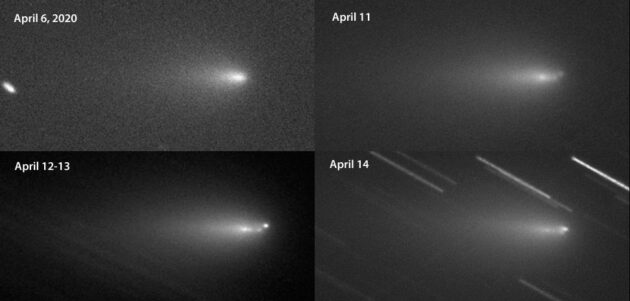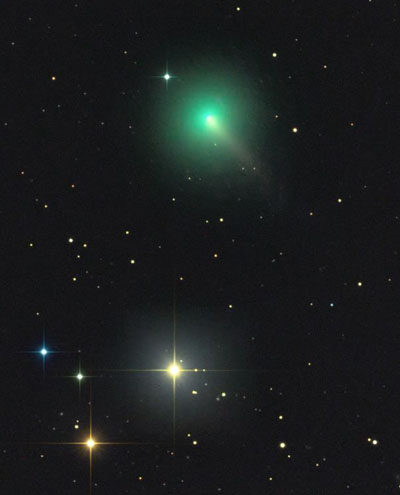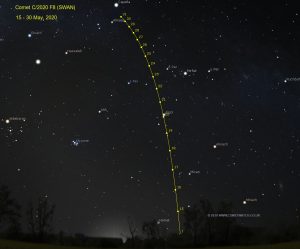
Over the past couple of months we’ve had a lot of drama surrounding Comet c/2019 y4 (ATLAS). The then desperately faint object was discovered last December. At first, the comet increased in brightness at an unprecedented rate through winter and early spring. It was predicted to potentially become a great naked eye comet (possibly the greatest of all time by some sources). Through mid to late March however the comet began to disintegrate before our eyes. At the time of writing, Y4 ATLAS continues to fragment as this image shows.

Comet C/2019 Y1 (ATLAS) – The Quiet, Reliable One
All the while, another comet discovered by the ATLAS program last December (C/2019 Y1) quietly moved through the northern skies. The comet has been gliding through Aquarius, Pisces, Pegasus and Andromeda steadily increasing to magnitude 9 as its brighter cousin took the limelight. Y1 ATLAS is now holding steady at magnitude 8.5 with a 9′ tail. The icy rock is now set to head through Cassiopeia, Cepheus and Camelopardalis from mid-April through early May.
Enter.. Comet SWAN
While the world appears to stand still dealing with coronavirus lock-downs, Spring 2020 is turning in to a hive of activity for comet observation. On 25 March, Comet C/2020 F8 (SWAN) was discovered by the Solar and Heliospheric Observatory’s SWAN camera. The newcomer is residing in the constellation of Piscis Austrinus in the southern hemisphere at 8th magnitude. This image taken by comet researcher Rolando Ligustri, Italy shows the comet has a dense coma and a short spiky tail.

Comet F8 SWAN will soon head northward towards Aquarius by he end of April making it visible to lower northern latitudes. The comet is expected to reach naked-eye visibility by mid-May low in the eastern dawn skies.
Comet C/2020 F8 (SWAN) Finder Charts
15-31 May, 2020


I would like to have SWAN info. as soon as possible, i.e. when, where and at what magnitude will it be in the dawn sky ? Hurry up calculations, please.
Hopefully it must be a visible rich-tailed comet since CATALINA, early 2016.
I’ve been able to see it right before dawn the past few nights. It’s visible in the northern hemisphere, in the E-SE sky if you’re looking towards the spot where the sun rises. Sorry, I’m not very familiar with the positions of constellations in the sky to be more detailed. I actually think I’ve spotted two other comets in the SW-Western sky as well, usually in the predawn hours.